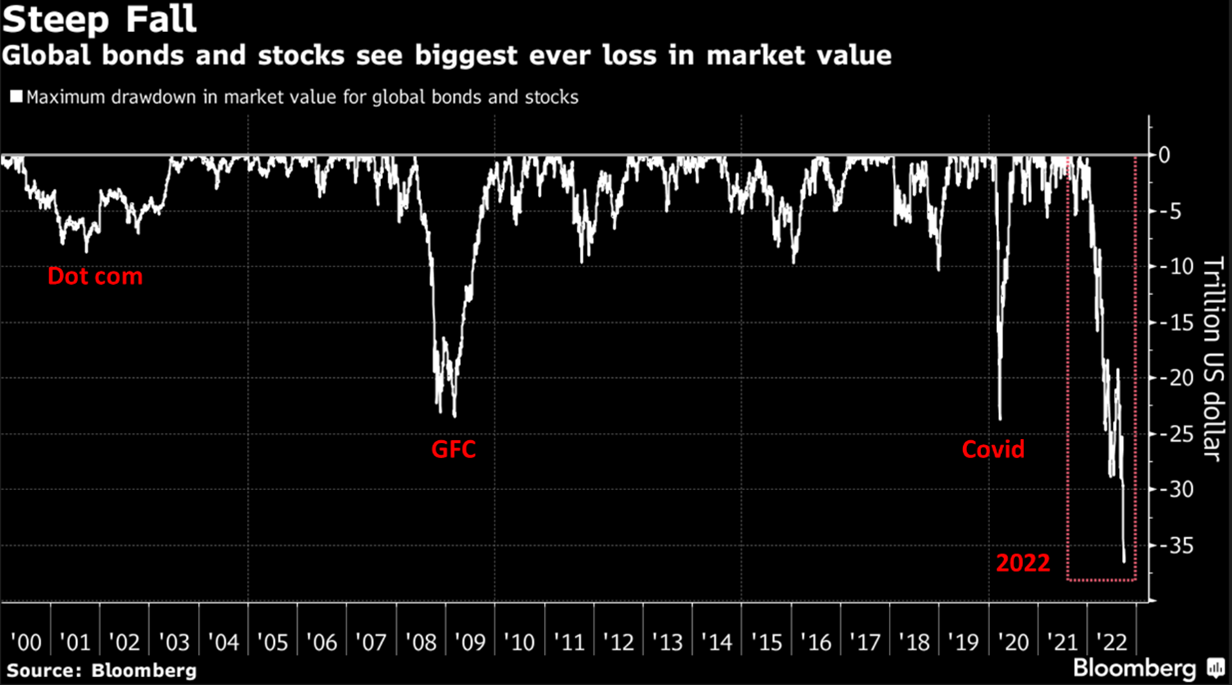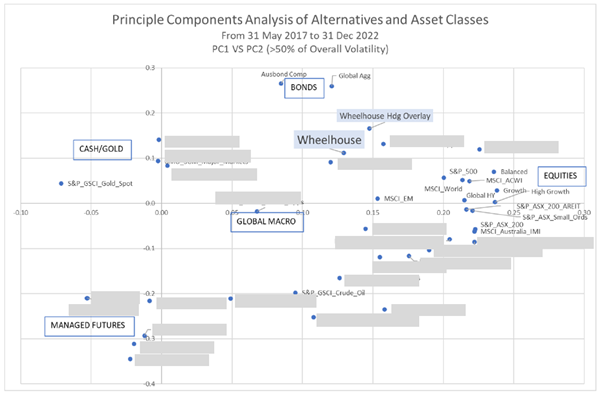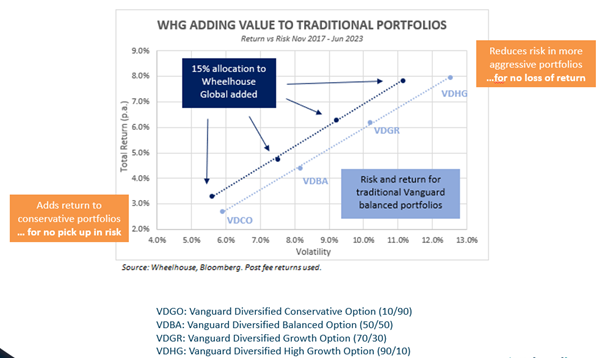Investors are not truly diversified until they own this asset class
Following the turbulent GFC period, the popularity of liquid alternatives grew. Having learned their lesson, investors rightly searched for different strategies to diversify the core equity risk embedded in their portfolios.
But then, over time, allocations to return-diversifying alternative strategies began to decline. More traditional balanced portfolios (60/40 of equity/bonds respectively) became the dominant way to mitigate risk.
That created a major problem: the balanced portfolios placed a huge reliance on the negative correlation between equities and bonds to ‘diversify’ risk.
In 2022, that singular reliance on one negative correlation proved disastrous.

When correlations reversed (and turned positive), both equities and bonds fell in unison. We actually saw much greater wealth destruction during the last calendar year than during the GFC or, indeed, any prior drawdown.
We are now entering another period of uncertainty.
With inflation potentially sticky, it’s unclear what the future correlations will look like between equities and bonds. Historically, we have seen long periods of both positive and negative correlation.
Furthermore, given elevated valuations, future returns from traditional assets, particularly equities, may be more challenging than in recent times.
This creates an imbalance between the favourable risk and return dynamics that traditional balanced portfolios have enjoyed in the past.
With this concern in mind, we recently commissioned research from respected research house Delta Research & Advisory to find out whether Australian portfolios were truly diversified and positioned to weather this environment.
The results were concerning.
It shows that advisors and investors, once again, need to consider a greater allocation to alternative strategies.
No true portfolio diversification
Delta found that many popular strategies, even many alternative strategies, simply repackage exposures to traditional asset classes. Because many shared a common and dominant risk exposure, these strategies are therefore simply not delivering true return diversification,
Rather than relying on labels or categorisations, the Delta analysis used a quantitative approach. It identified the underlying fundamental return drivers that explain the majority of the strategies returns. (Delta used Principal Component Analysis (PCA), which looks to group or ‘cluster’ strategies together if they share common exposures, such as equity risk.)
As you can see in the chart below, the dominant exposure is clearly equity risk. That is the case for equity-based strategies, but also for many balanced portfolios.

“We found that a significant amount of an investor’s portfolio resides in funds largely dependent upon the same underlying factors that drive key asset classes,” says Delta’s managing director, Michael Furey. “That means these funds are not providing true portfolio diversification, which is a real risk in this environment.”
Reconsidering alternatives
Delta’s research, and past experience, is a warning that the so-called ‘diversification’ of many Australian portfolios is likely to break down just when investors are most likely to require it.
When markets are calm, well-designed, genuinely diversified portfolios go largely unnoticed and portfolios with large risk exposures to equities dominate. But when markets turn stormy and equities move in the wrong direction, well designed portfolios prove their worth.
Given an increasingly risky environment, what should investors do to ensure they do have a well-designed and truly diversified portfolio?
We believe that investors and advisors should be looking to alternatives.
Alternative investments are generally regarded as anything that falls outside of the traditional asset classes of equities, bonds or cash. These exposures can include unlisted assets, private equity, private debt, commodities and derivatives.
One bright side of Delta’s research is that it highlights that including alternatives can create a wide dispersion of return sources. (In the chart above, portfolios would fall away from the cluster around equities and equity risk.)
We can use our own Global Fund as an example of the benefits of adding alternative assets to a portfolio.
While we do hold equities (via an Index), more than 90% of total return is generated via received option premium instead of capital growth. When coupled with capital preservation strategies like tail hedging, the strategy has more of an absolute return profile while having low volatility at around 7.5%.
Particularly during a drawdown, the option-based defensive strategies have historically had a correlation of -0.9 with equities (where -1.0 is perfect negative correlation). As a result, the overall strategy delivers a positive returning growth exposure, with a highly reliable defensive mechanism inbuilt and offsets and reduces equity risk during a crisis.

Alternatives can help diversify risk within investors’ portfolios and improve returns for a given level of risk. As the example above highlights, in more aggressive portfolios, a satellite allocation to the Wheelhouse Global Fund would have reduced risk with minimal return impact. However, for a more conservative portfolio, the inclusion of a similar allocation would have enhanced returns with minimal impact on risk.
How much to allocate to alternatives?
In the example above we use a 15% allocation to Alternatives, with this sizing not uncommon for many consultant-advised investor portfolios that we have exposure to. Ultimately the optimal percentage allocation to alternatives will be a matter for every individual and their advisor to discuss.
On the other hand, institutional investors appear further down the path of incorporating Alternatives into their portfolios. For example, the Future Fund is currently allocating 43.5% to Alts, spread across Private Equity (16.5%), Infrastructure & Timberland (10.0%) and other Alternatives (17%).
Conclusion
As the Delta research highlights, many equity-based strategies and balanced portfolios have an uncomfortably high risk concentration to a single risk exposure… equities. Similar to the post GFC environment, Alternatives seem likely to play an increased role in providing a solution to this problem.
Furthermore, with an increasing variety of Alternative investment strategies on offer, we believe quantitative tools such as the PCA analysis provided by Delta can help with the implementation of such a solution, by adding valuable insights on building diversification within an allocation to Alternatives.
A copy of the Delta Research report is available from Wheelhouse Partners by request.
3 topics

